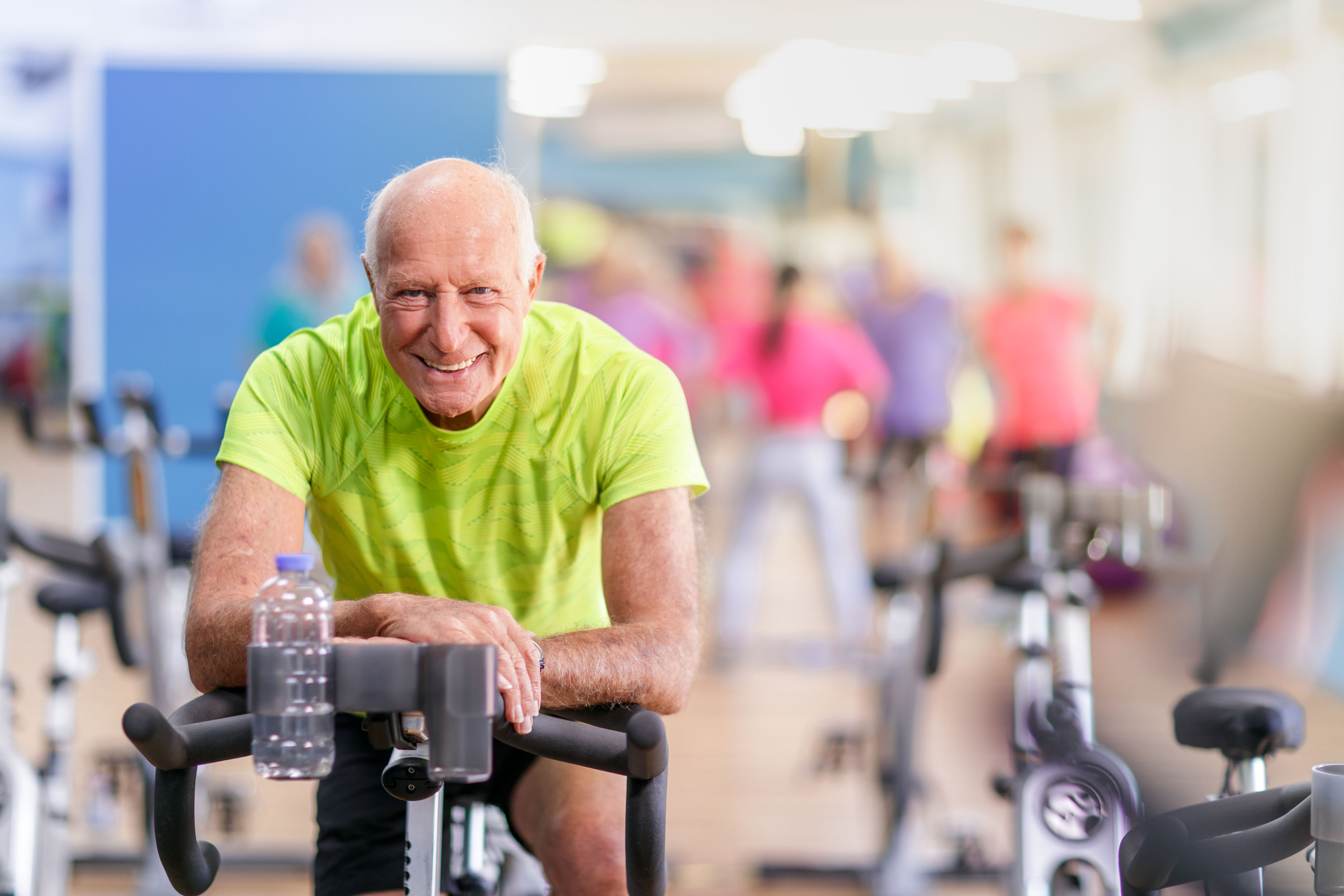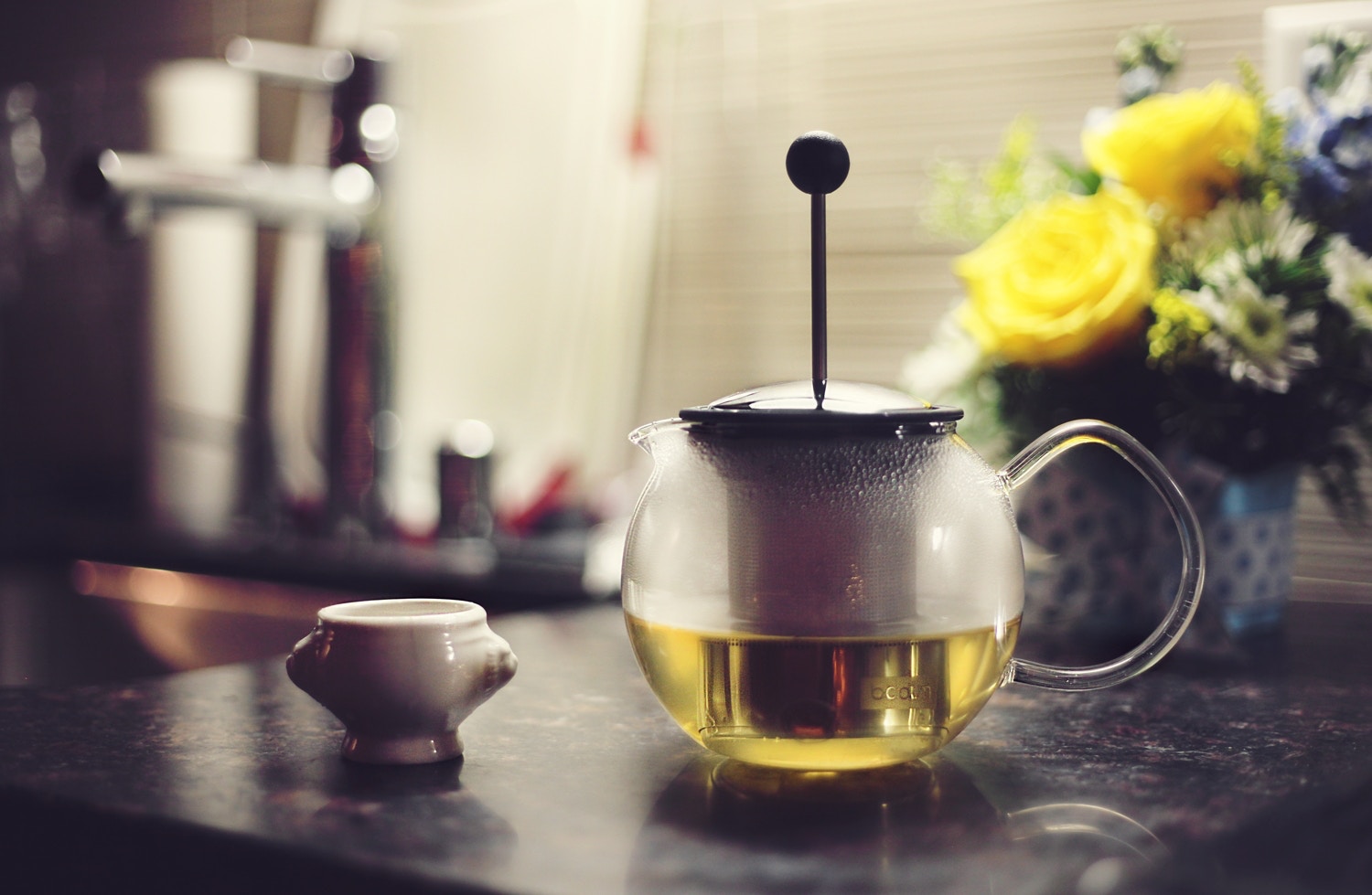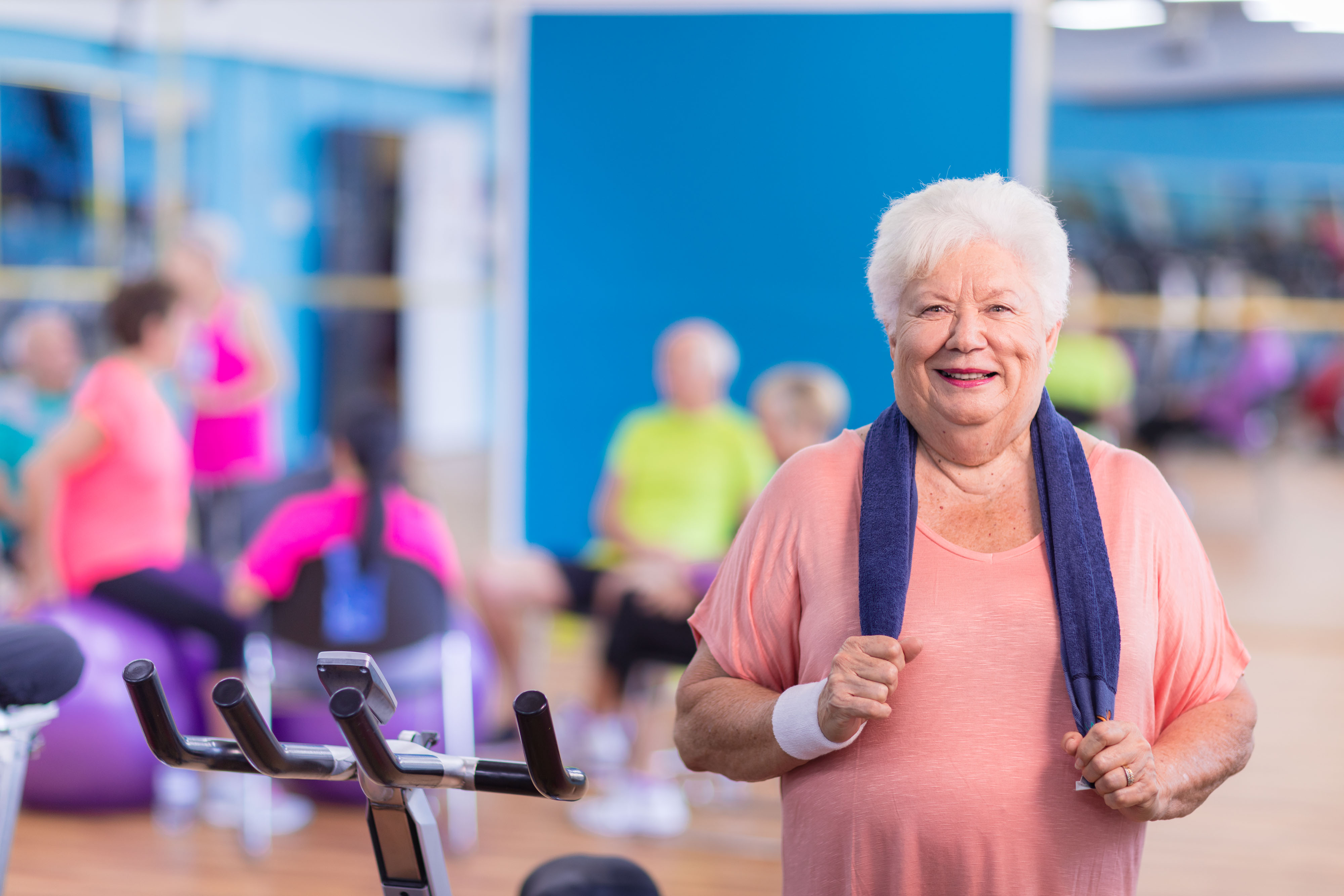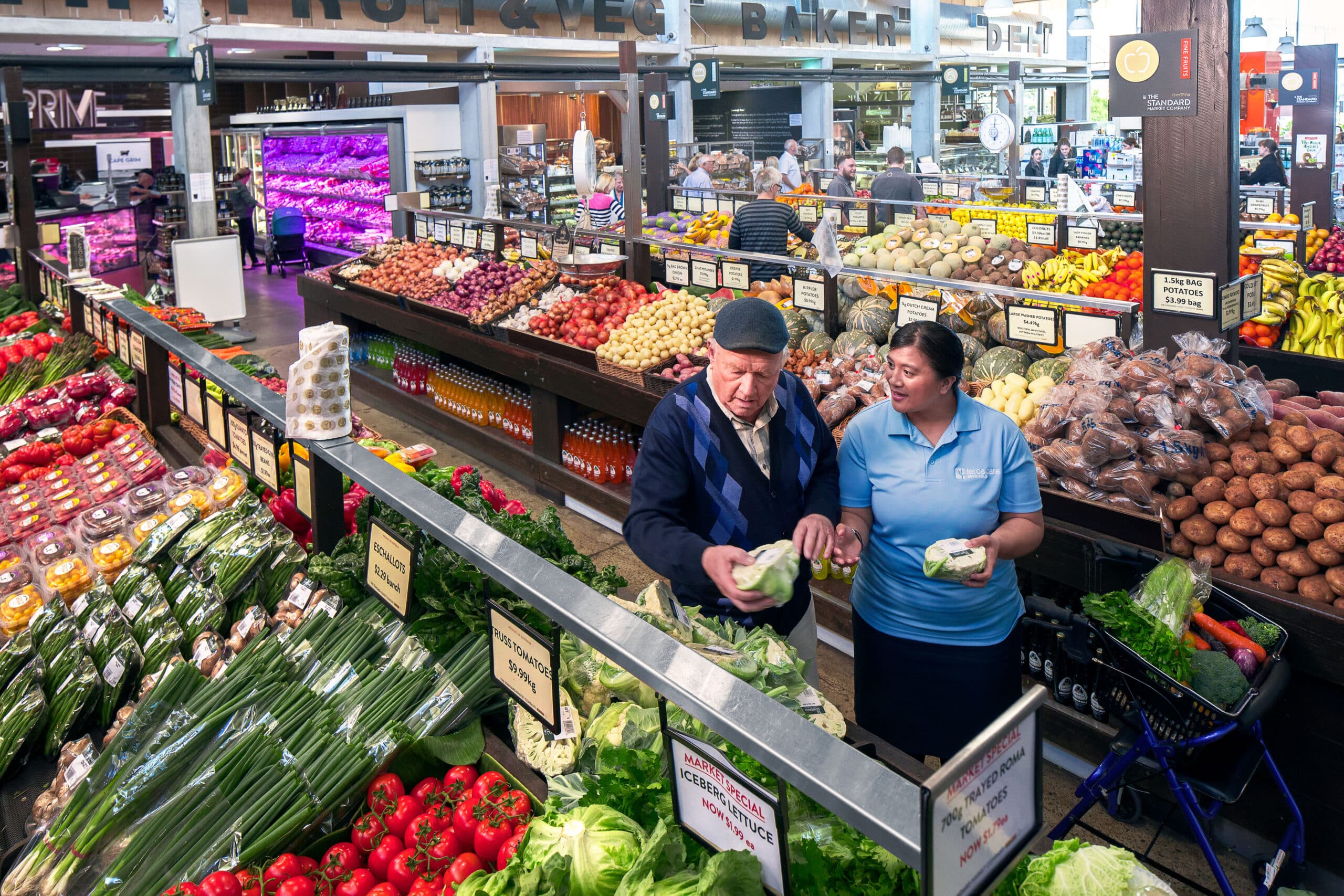
How to lower your health risks – boost your ‘good’ cholesterol, seven foods for healthy eyes, and more tips for seniors
As we age, it’s natural that life gets in the way, and as a result our health often takes a backseat. But approaching your golden years with good health might just be the best thing you can do for yourself. What can you do to lower your health risks after retirement?
Mid-life is a good time for us to take stock of life in general. But your health, as the saying goes, is everything. Why not take the time to sit down, think about your risk factors and make an investment for the long-term? Just like you do with your career. Or your finances. If you think about it, some of the same rules apply. All you need to do is have a look at how things are right now. And then make a plan to protect your future.
Taking care of your health will have lasting effects on your life (and just how long you’re going to enjoy it). People who exercise regularly and follow a healthy diet are less likely to develop dementia, depression, and other common illnesses. In the long run, small changes in your habits can have a lasting benefit.
So, where to from here? First off, we need to acknowledge what we cannot control. These are things like our age and the changes the body undergoes as it gets older. The main factors you can control have a big influence on your health. These include the types of food you eat and how much exercise you do, as well as other factors, like whether you smoke or drink, or hydration.
Below are some of the best ways to keep your health in check and make sure you enjoy all this life has to offer for as long as you can.
How to boost your good cholesterol
One of the basic building blocks of a happy and healthy heart is to ensure that your LDL (bad) cholesterol is as low as possible. After all, bad cholesterol contributes to artery-clogging plaque deposits, which can cause heart attacks and other issues. On the other side, doctors encourage us to also raise our HDL (good) cholesterol. That’s because HDL removes cholesterol from the blood and transports it to the liver for elimination or recycling, and as a result people with high HDL tend to be at lower risk of heart disease.
So what can you do to boost your good cholesterol?
Exercise more
Vigorous exercise is best for boosting your HDL (good) cholesterol, but any extra exercise is better than none.
Lose weight
If you are overweight, losing 5% to 10% of your current weight can raise HDL, along with reducing blood pressure and blood sugar.
Avoid trans fats
Not eating these artificial fats — found in hard margarines, many baked goods, and fried fast foods — raises HDL cholesterol. Reducing your intake also helps to lower LDL (bad) cholesterol.
Cut back on refined carbs
Switch from refined carbohydrates (such as white bread) to whole grains. It also helps to add more lean protein to your diet.
Don’t smoke
Quitting smoking improves HDL and helps your health in many other ways.
If you drink alcohol, do so in moderation
Moderate drinking means one or two drinks per day. Moderate alcohol consumption supports healthy HDL levels, but it isn’t something you should start doing specifically to boost good cholesterol.
Yummy snacks without the guilt
When it comes to eating clean, we all have our guilty pleasures. Whether that’s a cheat day a week when you eat whatever you can get your hands on, or an absolute soft spot for ice cream, there are always alternatives to improve our health and relationship with our bodies.
Try these quick and easy to prepare snacks that are yummy, cost effective and healthy… and yes, you can use those words in the same sentence!
Greek yoghurt
Greek yoghurt is a fermented dairy product that is high in nutrients, with a refreshingly tart flavour. It’s low in carbohydrates and provides the benefits of calcium, vitamin B-2, vitamin B-12, potassium, and magnesium.
It’s easy to digest, and is a great base for a variety of tasty and nutritious, guilt-free snacks. Add berries or banana, dried fruit, nuts, honey, cinnamon or shredded coconut for a really delicious snack. And if you’re handy in the kitchen, try whizzing other ingredients like spinach through to create a fabulous and healthy dip.
Overnight oatmeal
This super-easy snack idea is a fantastic treat – with a little organisation to prepare it the night before. Put the following base ingredients into a container:
- 30 grams of dry rolled oats
- 50 grams of Greek yoghurt
- about 50ml of milk, almond milk or water and
- a tablespoon of chia seeds – chia seeds are a superfood, among the healthiest foods on the planet. They are loaded with nutrients that can have important benefits for your body and brain. And chia seeds are extremely high in omega-3 fatty acids and also have other important nutrients such calcium, vitamin C, iron and potassium.
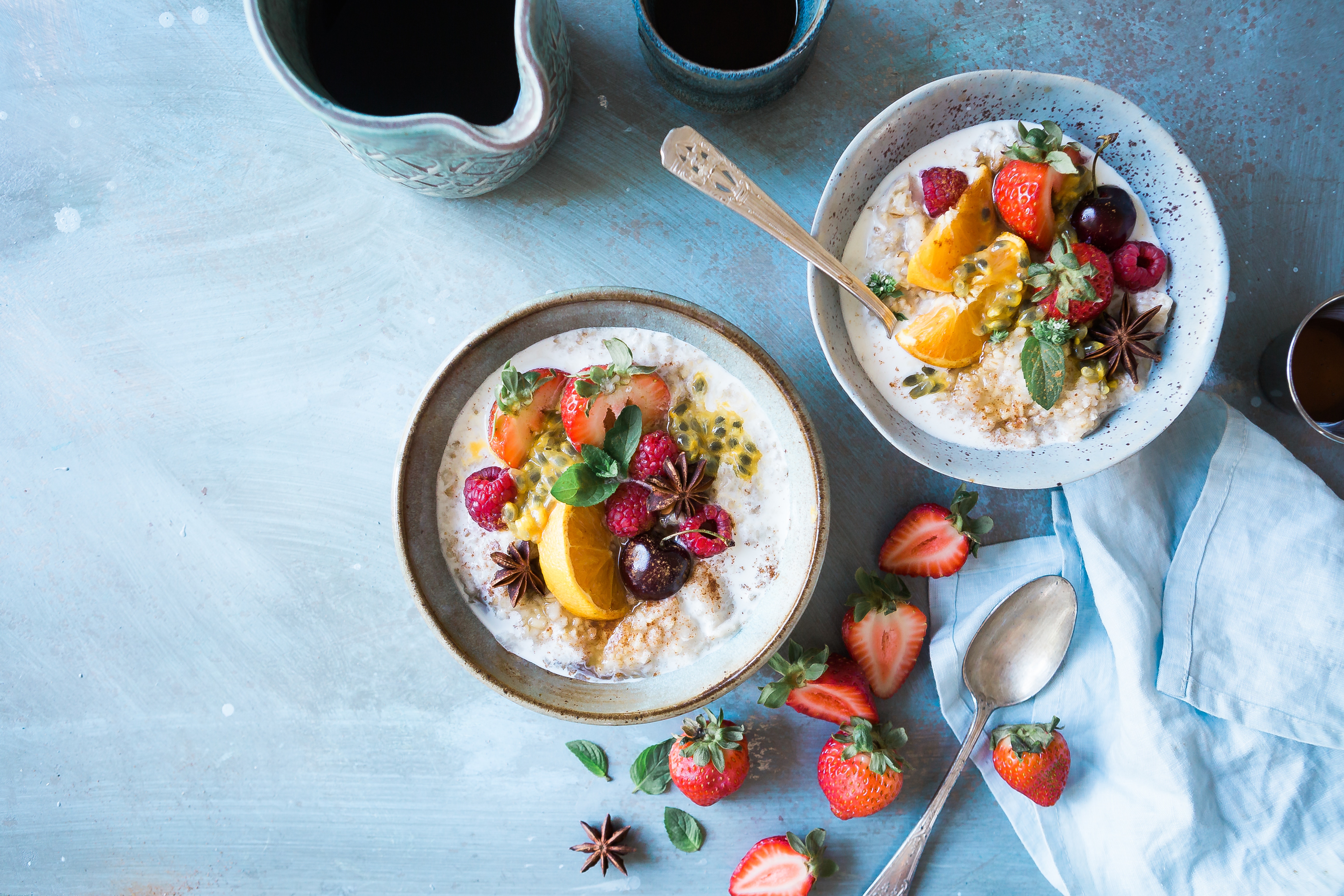
Once you’ve finished adding the ingredients you’ve chosen, seal the container and place it in the fridge overnight. The chia seeds and oats will absorb the moisture and turn your creation into a delicious oatmeal pudding.
Protein bar
If you are looking for a quick and easy snack that you can take with you while you’re on the go, check out the protein bars available at your local health food store. Some varieties contain a long list of artificial ingredients and added sugars, which can do more harm than good, but with a little discernment you can easily select a really delicious and nutritious snack.
Protein bars are available in indulgent flavours like chocolate or strawberry cheesecake which can satisfy your sweet tooth, but are high in fibre to help you feel fuller for longer. They also tend to be really chewy, which can makes you feel like you’ve eaten more than you have – and they give your jaw muscles a good workout!
When choosing protein bar products look at the nutritional information of the packaging for those which are high in protein, without containing too much fat or sugar.
Some protein bars can be up to 500 calories but these are more of a meal replacement, so for snacks, look for products with around 200 calories or less.
Celery with nut butter
You really can’t go past the trusty celery with peanut butter snack. It’s fresh, delicious, low carb and guilt free!
Place 2-3 tablespoons of peanut butter or other nut butter – or even tahini – on a few pieces of celery or mixed vegetables and you have yourself a great and easy snack with healthy fats, protein, and essential vitamins and minerals.
Five foods for healthy eyes
Did your mother ever tell you to eat carrots for good eyesight? While carrots are definitely good for you, there are five foods that are even better than carrots for your vision.
Dark leafy greens
Spinach and other leafy greens such as kale offer your eyes lutein and zeaxanthin, two antioxidants that protect against eye damage. These nutrients also help your eyes detect contrast better, so eating foods rich in these antioxidants not only improves vision, but also help maintain your vision long-term. Lutein has also been linked to reduced risk of cataracts.
Oysters
Oysters are rich in the mineral zinc, which helps to transfer vitamin A from the liver, where it’s stored, to the retina in your eye. Vitamin A helps to produce melanin, a protective eye pigment. If you don’t enjoy eating oysters, include other food sources in your diet that are rich in zinc such as egg.
Green tea
Green Tea is a rich source of flavonoids, a group of antioxidants that help to protect the retina from sun radiation damage. So, if you don’t already, perhaps try substituting your standard cuppa with a green tea at least once daily.
Walnuts
Walnuts are a rich source of plant-based omega-3 fatty acids, which are different to the variety found in seafood. They may help to look after your blood vessels, as well as blood flow and blood fat levels, which are critical to how the eyes and the rest of the body works. Walnuts also contain vitamin E, folate, melatonin, and antioxidants, all of which protect the body, and therefore, the eyes’ nerves. Walnuts are easily enjoyed in muesli, or on their own as a snack. You could also add them to healthy breakfast muffins.
Salmon, herrings and sardines
Fatty fish are a rich source of fish oils containing omega-3s. Omega-3s from seafood help to fight inflammation and lower your risk of developing age-related macular degeneration. So get in two serves of fatty fish each week – the canned variety are okay too. You can enjoy fish baked, or in a salad, curry or sandwich. Your eyes will love you for it, not to mention the rest of your body.
Get in two serves of fatty fish each week – the canned variety are okay too.
Always keep hydrated – especially in older years
As we get older our body’s ability to conserve water diminishes, and this makes it difficult for us to adapt to temperature changes. Both in summer and in winter. Medications can also affect your ability to retain fluids. Laxatives, diuretics, antihistamines, antipsychotics and corticosteroids can all cause us to go to the loo more often. This depletes our fluids and electrolytes. And alcohol doesn’t help, either.
Our sense of thirst also reduces with age. So, by the time you feel thirsty, your body’s essential fluids could already be really low. And if someone has issues with incontinence or has dementia, they may also limit or forget to take in fluids.
Signs of dehydration
Early signs of dehydration are headaches, muscle cramps, constipation, lethargy, sleepiness, and dry mouth. When it’s severe, it shows up as dry skin that stays folded when pinched, or as irritability, dizziness, and confusion. There’s also little or no urine output. And if there is, it’s dark or amber-coloured.
Someone who’s dehydrated in a major way can experience low blood pressure, rapid breathing and a fast heartbeat. They can also have a weak pulse, and cold hands and feet. This can progress to seizures as a result of electrolyte imbalance, reduced volume of blood in the body, kidney failure, or a coma.
Hydration station
While staying hydrated can be helped by drinking more, some foods also have a high water content. Here are some tips for increasing fluid intake:
- try flavoured waters if plain water isn’t palatable
- ·vegetable broth is a soothing, savoury source of fluid and electrolytes in winter
- milkshakes, smoothies and ice-blocks have plenty of liquid
- try to incorporate more raw fruit and veggies in your diet. A small plate of celery sticks, cucumber slices and cherry tomatoes served with hummus makes a fluid-filled snack. Watermelon, oranges, grapes, blueberries and apples also contain high percentages of water.
Move, move, move – exercise your way to better health
Another significant factor in your health is how much you move. The more active we are, generally the longer we live. And we’ll live and feel better, too. Studies have shown that the more physical activity you incorporate into your everyday life, it improves mood, you have better control over your blood sugar levels, and the risk of heart disease is reduced, among other things. And while you may not be able to do everything you used to do, there are still options available.
One great way to get your exercise in is by dancing. Dancing for better health later in life can help prevent the development of Alzheimer’s and other types of dementia, improve balance and flexibility and as a result reduce the chance of falls or injury, and positively impact mental health.
Other options include swimming, yoga, tennis, or watersports like kayaking. Any exercise is a great way to pass time in a healthy way with friends and other like-minded people.
